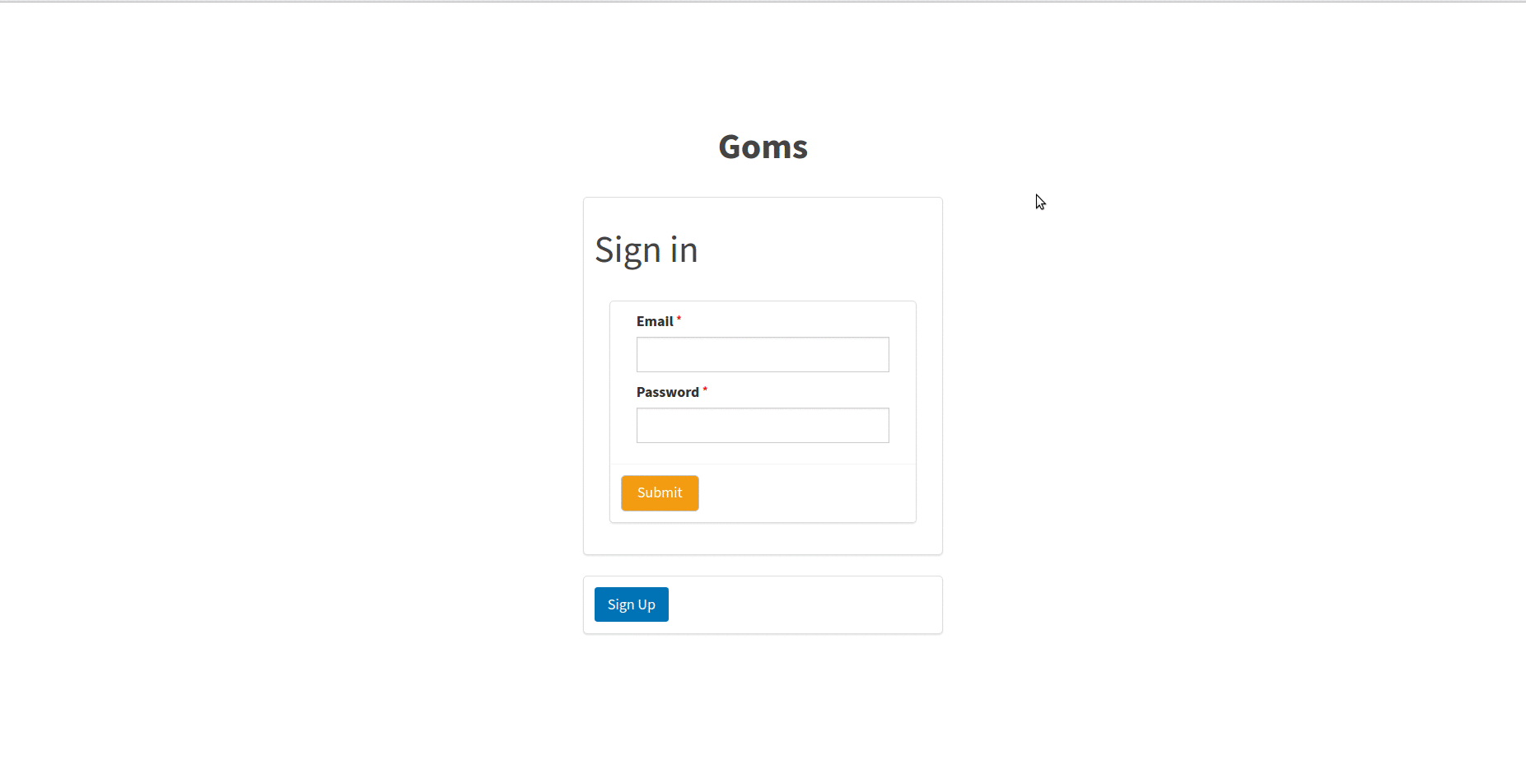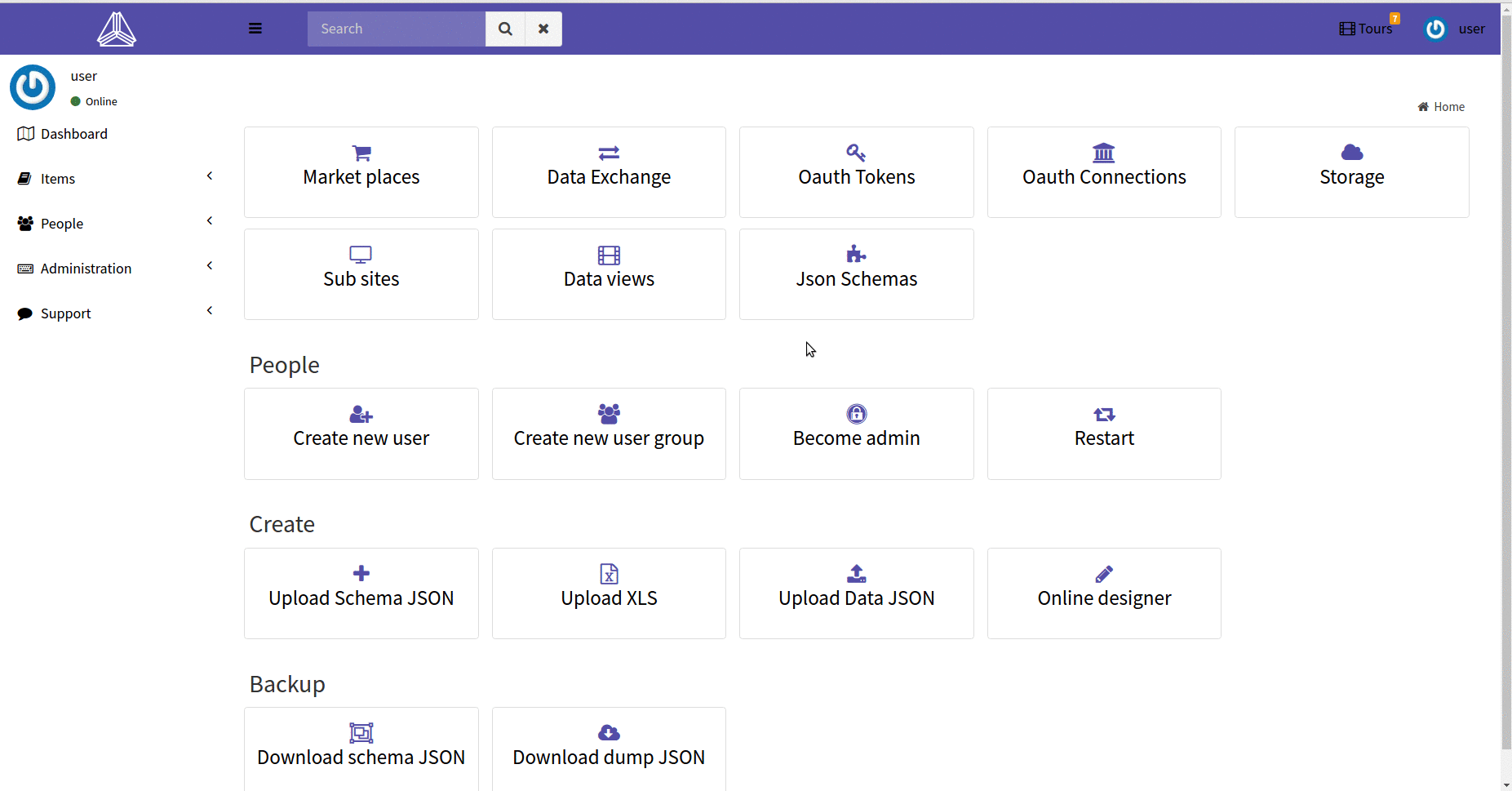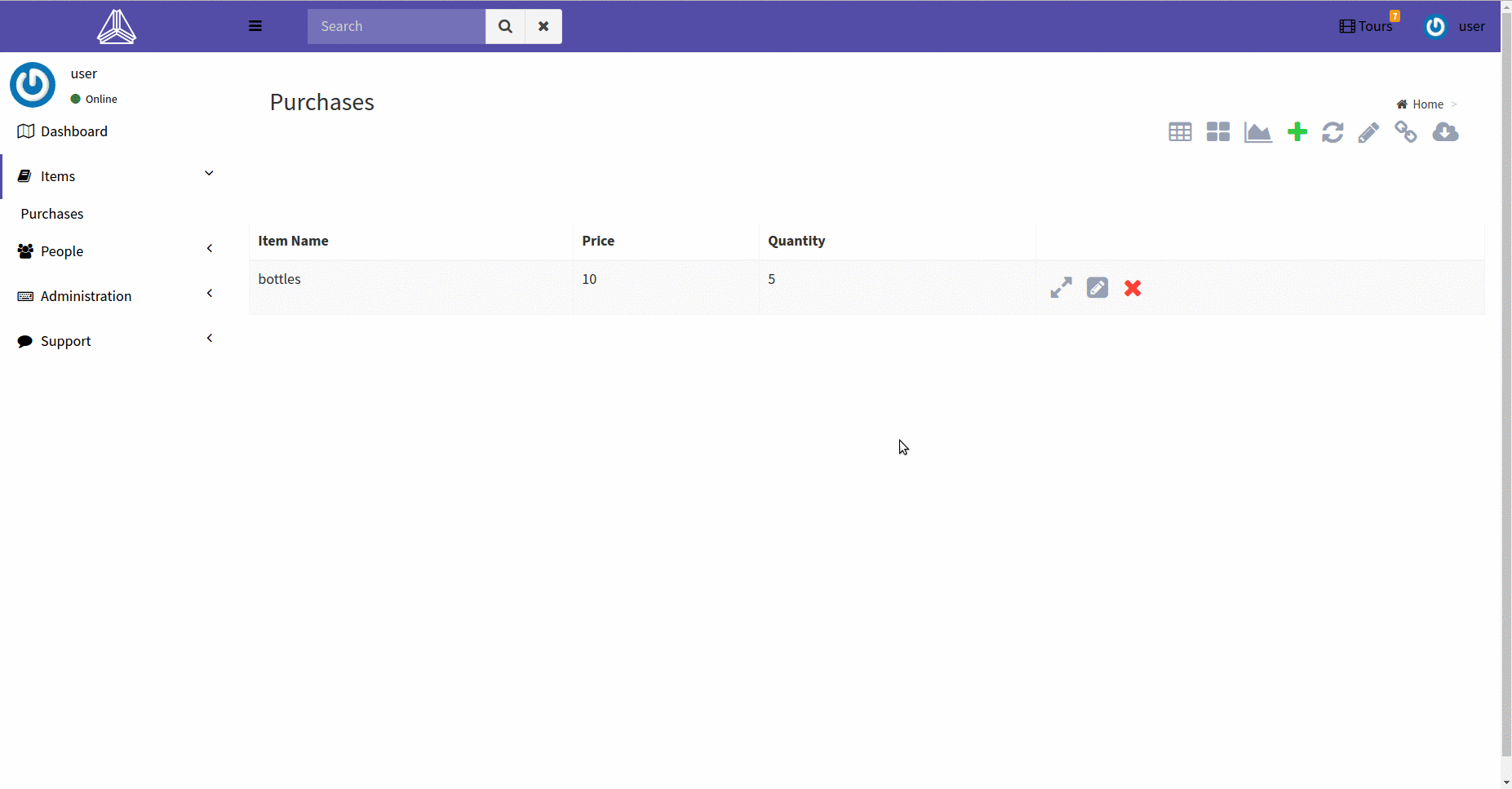Daptin








What is Daptin?
Daptin is a way to serve RESTful API from a MySQL/PostgreSQL/SQLite Database.
Installation
Cloud

Docker
docker run -d -p 8080:8080 daptin/daptin
Native
SQLite
./daptin -db_type sqlite3 -db_connection_string daptin.db
MySQL
./daptin -db_type mysql -db_connection_string '<username>:<password>@tcp(<hostname>:<port>)/<db_name>'
PostgreSQL
./daptin -db_type postgres -db_connection_string 'host=<hostname> port=<port> user=<username> password=<password> dbname=<db_name> sslmode=enable/disable'
Database connection properties
Connection details to be provided in arguments or environment variables
JSON API Structure
Response Structure
{
"data": [
{
"type": "tableName",
"attributes": {
"col1": "",
"col2": "",
},
"id": "",
}
],
"included": [
{
"type": "tableName",
"attributes": {},
"id": "",
},
.
.
],
"links": {
"current_page": 1,
"from": 0,
"last_page": 100,
"per_page": 50,
"to": 50,
"total": 5000
}
}
Querying
| all rows from a table |
single row from table by id |
related rows using a foreign key relation |
| /api/{tableName} |
/api/{tableName}/{id} |
/api/{tableName}/{id}/{relationName} |
|
|
|
paginated
| Number |
Size |
| ?page[number]=1 |
?page[size]=200 |
project, sort, filter
| Column projection |
Sorting |
Filtering |
| ?fields=column1,column2 |
?sort=col1,-col2 |
?filter=query_text |
Client SDK
JSONAPI clients list
RAML specification for APIs
Available at <host>/apispec.raml You can use it to generate clients for any platform.
Usage
Tables:
- TableName: todo
Columns:
- Name: title
DataType: varchar(500)
ColumnType: label
IsIndexed: true
- Name: url
DataType: varchar(200)
ColumnType: url
IsNullable: true
- Name: completed
DataType: int(1)
ColumnType: truefalse
DefaultValue: 'false'
- Name: schedule
DataType: date
ColumnType: date
IsNullable: true
- Name: order
ColumnName: item_order
DataType: int(4)
ColumnType: measurement
DefaultValue: '10'
- Name: text
DataType: text
ColumnType: content
IsNullable: true
Conformations:
- ColumnName: order
Tags: numeric
Validations:
- ColumnName: title
Tags: required
- TableName: tag
Columns:
- Name: label
DataType: varchar(100)
ColumnType: label
IsIndexed: true
- TableName: project
Columns:
- Name: name
DataType: varchar(200)
ColumnType: name
IsIndexed: true
Relations:
- Subject: todo
Relation: has_one
Object: project
- Subject: todo
Relation: has_many
Object: tag
Web Dashboard



Daptin will provide
-
JSON based CRUD+eXecute APIs for all your entities
-
Integrated authentication and authorization with user management
-
Access control for data
-
Extensible system with useful integrations (eg sync data updates to 3rd party api)
-
Client libraries to consume JSON API seamlessly
-
Sub site hosting (SSH) without the need to run separate server
-
An events-actions-outcomes framework to extend system
-
Data-as-objects (instead of just strings)
Compared to building JSON APIs directly, Daptin provides APIs that makes writing fast frontend apps simpler.
Why Daptin?
Daptin was to help build faster, more capable APIs over your data that worked across for all types of frontend.
While Daptin primarily targeted Web apps, the emergence of Android and iOS Apps as a rapidly growing target for developers demanded a different approach for building the backend. With developers classic use of traditional frameworks and bundling techniques, we struggle to invest enough time in the business and frontend demands for all sorts of Apps that provide consistent and predictable APIs which perform equally well on fast and slow load, across a diversity of platforms and devices.
Additionally, framework fragmentation had created a APIs development interoperability nightmare, where backend built for one purpose needs a lot of boilerplate and integration with the rest of the system, in a consistent way.
A component system around JSON APIs offered a solution to both problems, allowing more time available to be invested into frontend and business building, and targeting a standards-based JSON/Entity models that all frontends can use.
However, JSON APIs for data manipulation by themselves weren't enough. Building apps required a lot of custom actions, workflows, data integrity, event subscription, integration with external services that were previously locked up inside of traditional web frameworks. Daptin was built to pull these features out of traditional frameworks and bring them to the fast emerging JSON API standard in an automated way.
Getting started
- Deploy instance of Daptin on a server
- Upload JSON/YAML/TOML/HCL file which describe your entities (or use marketplace to get started)
- or upload XLS file to create entities and upload data
- Become Admin of the instance (until then its a open for access, that's why you were able to create an account)
Tech Goals
- Zero config start (sqlite db for fresh install, mysql/postgres is recommanded for serious use)
- A closely knit set of functionality which work together
- Completely configurable at runtime, can be run without any dev help
- Stateless(Horizontally scalable)
- Try to piggyback on used/known standards
- Runnable on all types on devices
- Cross platform app using qt (very long term goal. A responsive website for now.)
Road Map
- Normalised Db Design from JSON schema upload
- Json Api, with CRUD and Relationships
- OAuth Authentication, inbuilt jwt token generator (setups up secret itself)
- Authorization based on a slightly modified linux FS permission model
- Objects and action chains
- State tracking using state machine
- Native tag support for user defined entities
- Data connectors -> Incoming/Outgoing data
- Plugin system -> Grow the system according to your needs
- Native support for different data types (geo location/time/colors/measurements)
- Configurable intelligent Validation for data in the APIs
- Pages/Sub-sites -> Create a sub-site for a target audiance
- Define events all around the system
- Ability to define hooks on events from UI
- Data conversion/exchange/transformations
- Live editor for subsites - grapesjs
- Store connectors for storing big files/subsites - rclone
- Market place to allow plugins/extensions to be installed
- Online entity designer
- Excel to entity identification
Documentation
Tech stack